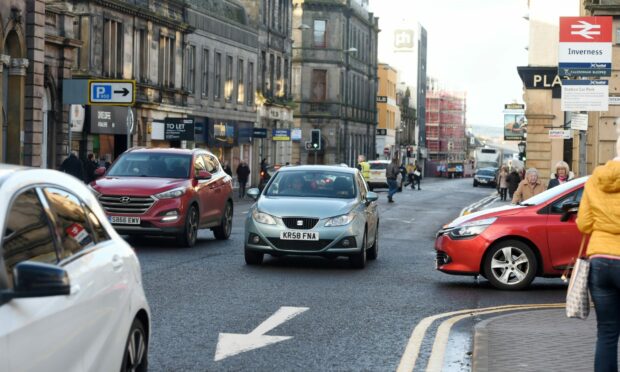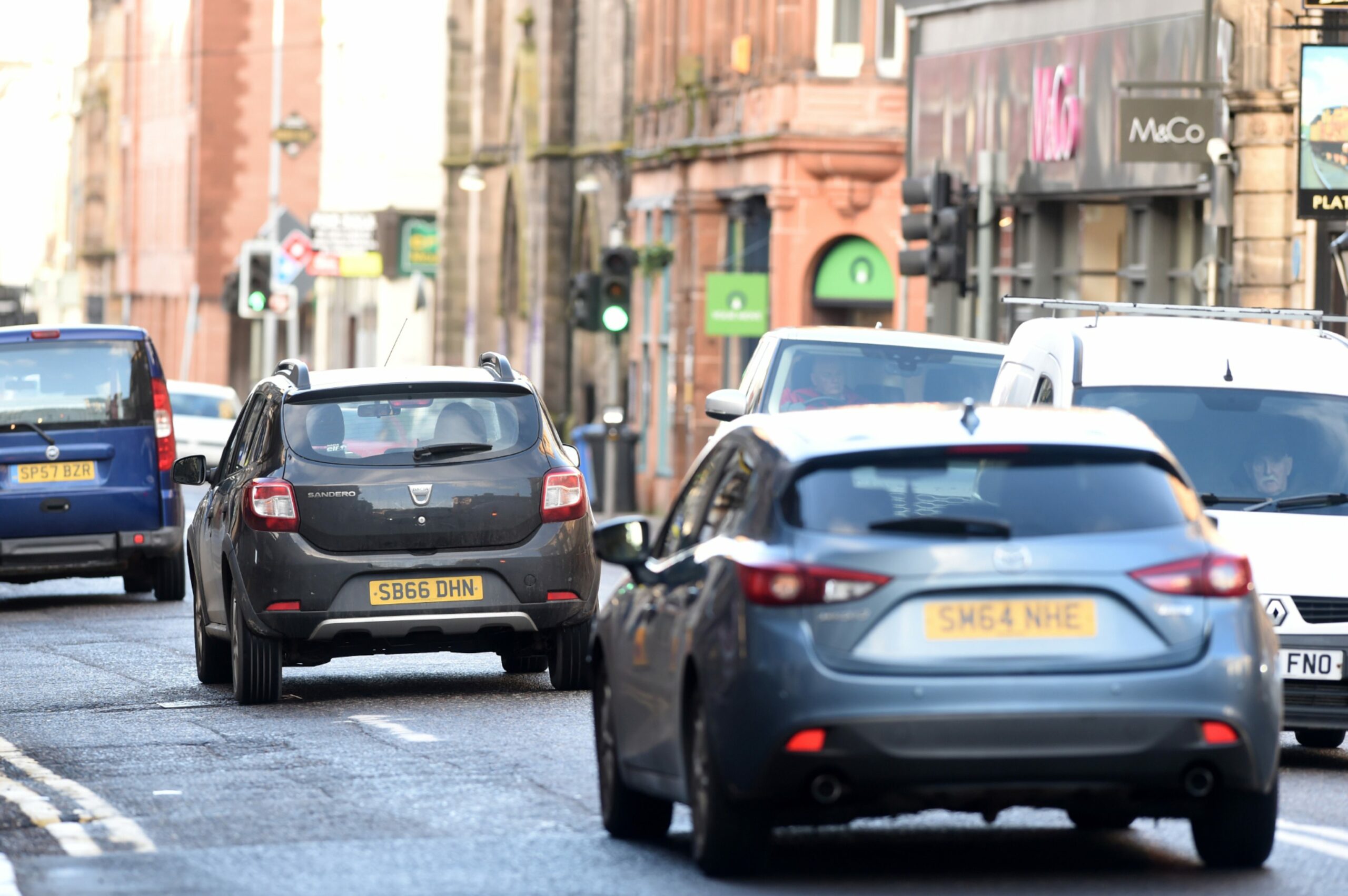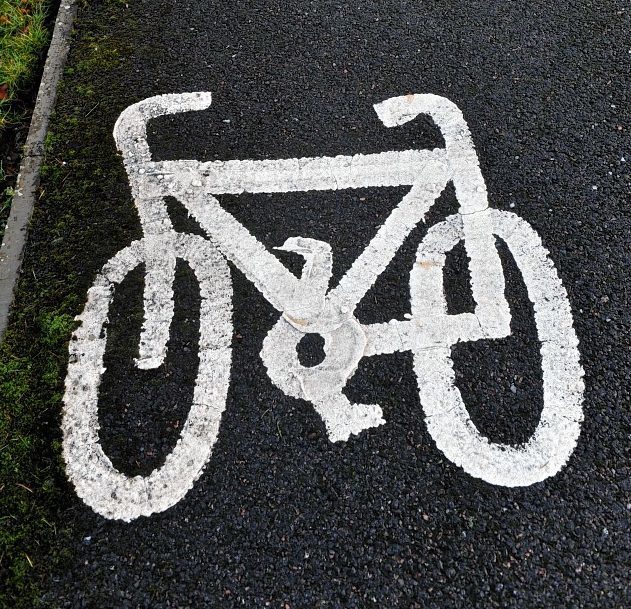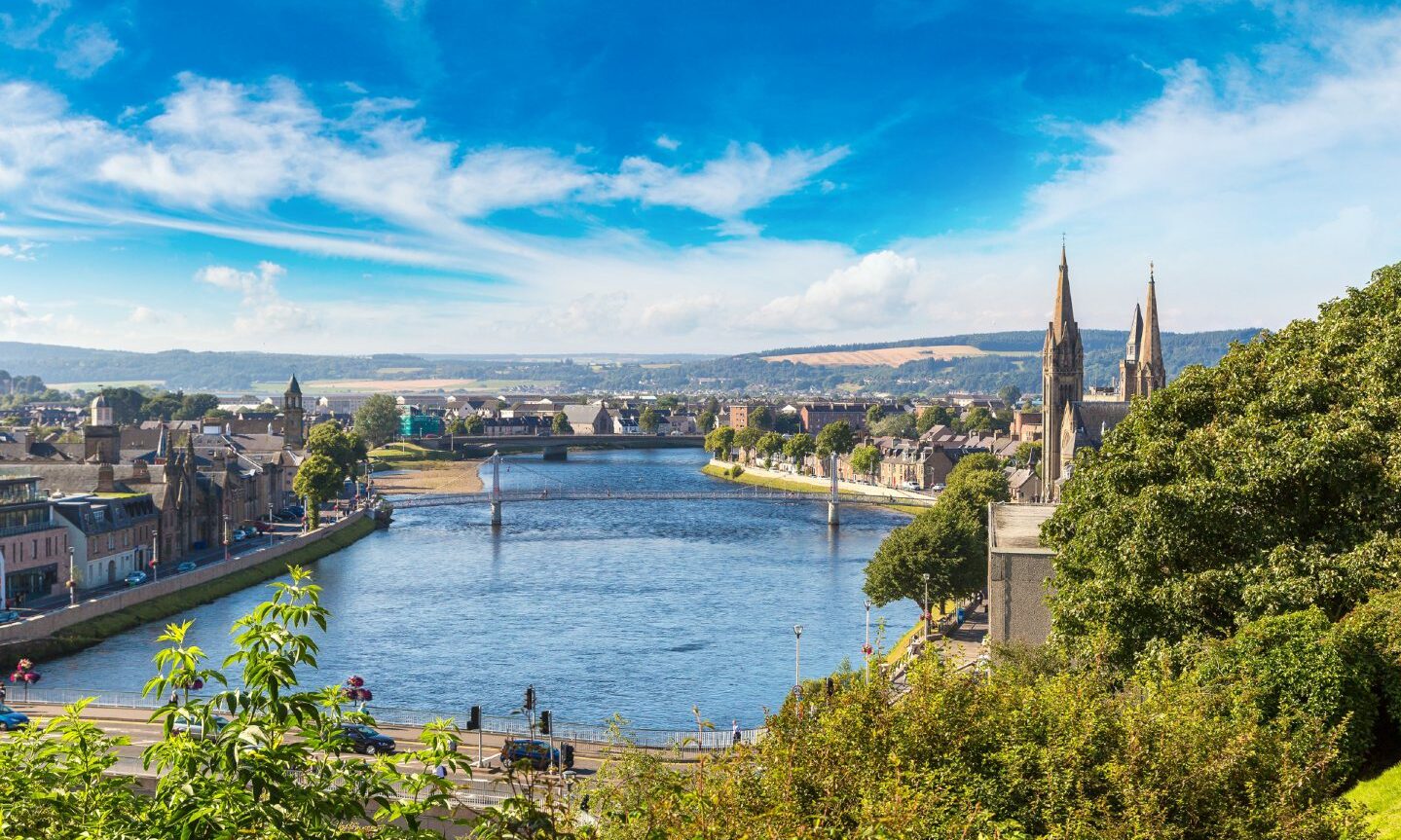Air pollution increases in Inverness means the city needs better cycle routes and improved bus services to protect the public’s health, campaigners have argued.
Friends of the Earth Scotland (FOTES) has analysed official air pollution data for 2021 all across Scotland.
The campaign group and charity looked at two key pollutant measurements — nitrogen dioxide, and particulate matter.
These kinds of pollution are produced by traffic.
FOTES found the worst streets for nitrogen dioxide in Inverness in 2021 were Academy Street and Telford Street.
Academy Street had the worst of this kind of air pollution, at 29.59 microgrammes per cubic metre averaged across 2021.
This made it the 7th worst street in Scotland for this sort of pollutant, according to FOTES analysis of data from automatic monitoring stations around Scotland.
Averaged across 2020, this figure was lower, at 28.19.
The Inverness street with the most severe particulate matter pollution was Telford Street.
‘Pollution damages our health through long-term exposure’
FOTES transport campaigner Gavin Thomson said the air pollution problems in Inverness were worse in 2021 compared to 2020, which he said is “unacceptable”.
Mr Thomson said the pandemic’s impact on traffic levels will have made a difference, but said he is still concerned.
He said: “2020 was an outlier for obvious reasons and we witnessed unprecedented changes to all areas of public life.
“But for traffic emissions, it was back to business as usual in 2021.
“From the evidence we have, every street in Inverness experienced higher levels of pollution in 2021 than the previous year.
“We need to remember that pollution damages our health through long-term exposure, such as living near a main road throughout your childhood.
“So, the reduced pollution for a couple of months during the strictest lockdown is unlikely to have many long-term health benefits.”
Council urged to put cycling infrastructure up a gear
Mr Thomson said that although Inverness is not currently planned to have a Low Emission Zone like Aberdeen is, there are actions Highland Council can take to reduce air pollution in the city.
He continued: “Unlike other cities in Scotland, Inverness is not getting a Low Emission Zone to restrict the most polluting vehicles from the city centre.
“Highland Council has finally, at long last, started to recognise that cycling infrastructure is needed in Inverness, but we are still in very early days and Inverness is behind other cities.
“We need to improve Inverness’s buses, with a comprehensive, publicly-owned affordable bus network.
“This would take cars off the road, reducing pollution and climate emissions.”
Highland Council ‘fully understand the need for continual improvement’
A spokesman for Highland Council said although air quality across the highlands is “generally very good and well within the required air quality requirements”, work does need to be done in more built-up areas.
He said: “There is a small Local Air Quality Management Area within Inverness city centre that was identified in 2014 where annual mean Nitrogen dioxide concentrations were exceeding the UK Air Quality Strategy Objective Concentration of 40 microgrammes per cubic metre at that time.
“However, since that date a lot of work has been carried out with partners in NHS Highland, Hitrans, Sepa, Inverness BID and community council representatives and the levels have been reduced to below the UK Air Quality Objective levels.
“Furthermore, the full beneficial impact from recent developments such as the provision of a new bus gateway from Farraline Park in June 2021 that reduces significantly the number of buses requiring to exit onto Academy Street, have yet to be fully quantified in the annual results.”
He added: “However, we fully understand the need for continual improvement and the council, in conjunction with its partners, will continue to review actions that can be taken to improve air quality in the Inverness city area.”




